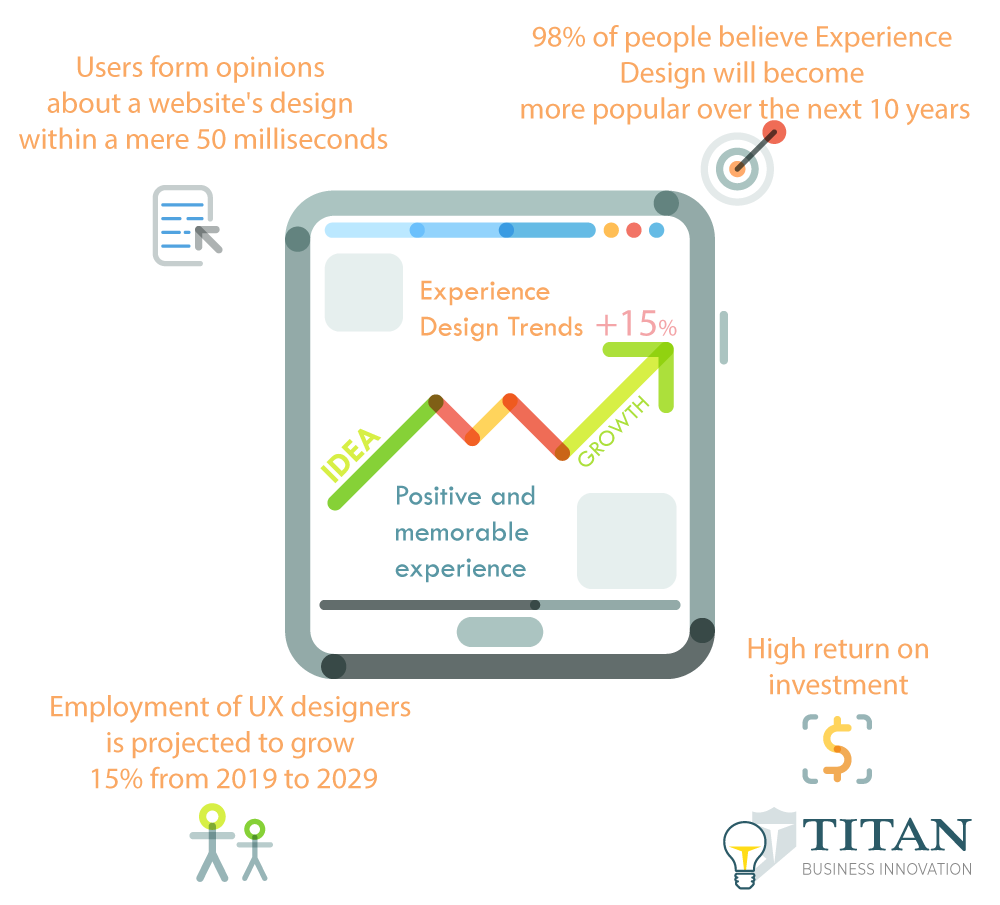In today’s podcast, Anthony and Luke discuss the future trends of Experience Design.
Over the past few years, the field of customer engagement has been revolutionized by the introduction of terms like UX and UI. As companies strive to create better user experiences, they are increasingly turning to Experience Design specialists seek to understand user behavior and preferences. In this article, we will take a deep dive into Experience Design, examining its critical importance in capturing user attention and exploring some of the exciting trends expected to shape the future of this rapidly evolving field.
Experience Design specialists are like psychology students, studying user behavior and striving to create better user experiences. And it’s no wonder why – studies show that users form opinions about a website’s design within a mere 50 milliseconds! That’s right, Experience Designers have a short window of time to capture a user’s attention and make a lasting impression.

Experience Design can be broken down into two subsets: User Experience (UX) and Customer Experience (CX). UX refers to the experience a user has when using a product or service, such as a website or mobile app. CX, on the other hand, refers to the experience a customer has with a brand across all touchpoints and channels. Both are critical to creating a positive and memorable experience for the user or customer.
Although the term “user experience” was first coined in the mid-1990s, it’s only in recent years that Experience Design has truly taken off. In fact, a recent global report shows that 98% of people believe Experience Design will become more popular over the next 10 years! And with good reason – a well-designed UX can have a significant impact on a company’s bottom line, with every dollar invested in UX design yielding up to $100 in return on investment.
Despite the growing interest in Experience Design, many companies still have a long way to go. The same report found that only 12% of people believe their company is realizing the potential of Experience Design, and 58% of people feel their company doesn’t even measure the impact of experience design.

But there’s hope on the horizon. Employment of UX designers is projected to grow 15% from 2019 to 2029, and 63% of people believe Experience Design is very important when it comes to impacting business performance. So where should Experience Design sit within a company? Well, that’s up for debate, with some believing it should be directly under the CEO, some believing it depends on the company structure, and others believing it should be its own department.
In conclusion, Experience Design is a critical aspect of customer engagement, and it’s only going to become more important in the years to come. So if you’re a business owner or marketer, it’s time to start investing in Experience Design and creating positive and memorable experiences for your users and customers!

